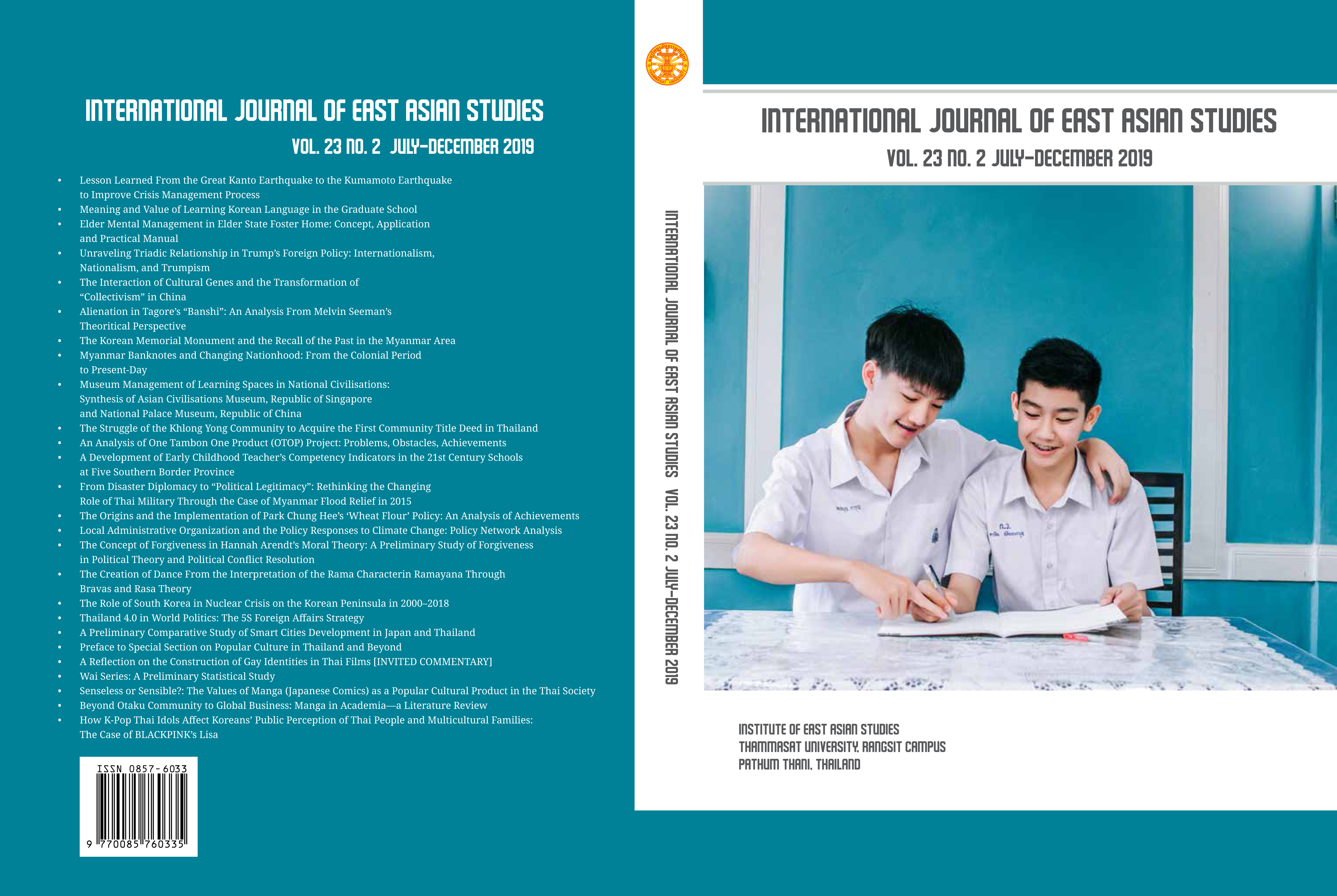The Creation of Dance From the Interpretation of the Rama Character in Ramayana Through Bravas and Rasa Theory
Keywords:
the creation of a dance, Rama character, Bhavas and Rasa theoryAbstract
The purpose of this study is to create performance which is interpretative from the "Rama" character in Ramayana through Bhavas and Rasa theory. Ram’s characters were expressed emotionally and sentimentally which were attacked from various conditions as human beings. Thus, both Eastern and Western theories were applied by distinguishing situations “Bhavas” varying 9 sentiments―“Rasa”- love, anger, sadness, fear, wonder, amusement, heroism, and peace; as Psychoanalytic and Human behavioral theories. The concept of this performance is created by three approaches: composition, multiculturalism and postmodernism.
The research found that there are the 9 – part performance with post-modernistic dance was not focused on narration, but exploration and adaptation processes. Which brings the concept of Minimalism to be applied to 8 forms of performance aspects: The play, The performers, The movement, The sound and music of the performance, The costumes, The space, The lighting and The equipment. Furthermore, dance’s beautifully national characteristics and audience’s involvement were presented, so new generations can easily learn moral conducts.
Downloads
References
กฤษรา (ซูไรมาน) วริศราภูริชา. (2551) งานฉากละคร 1. กรุงเทพฯ: สำนักพิมพ์แห่งจุฬาลงกรณ์มหาวิทยาลัย.
ดวงธิดา ราเมศวร์. (2558). ต้นตำนานรามเกียรติ์ จากต้นฉบับเดิม รามายณะ. กรุงเทพฯ: กอแก้ว.
ธรากร จันทนะสาโร. (2557). นาฏยศิลป์จากแนวคิดไตรลักษณ์ในพระพุทธศาสนา (วิทยานิพนธ์ ศป.ด., จุฬาลงกรณ์มหาวิทยาลัย, กรุงเทพฯ).
นราพงษ์ จรัสศรี. (2548). ประวัตินาฏยศิลป์ตะวันตก. กรุงเทพฯ: สำนักพิมพ์แห่งจุฬาลงกรณ์มหาวิทยาลัย.
ปัทมา วัฒนพานิช. (2556). บทบาทนางนารายณ์ในการแสดง นาฏยศิลป์ไทยร่วมสมัย เรื่อง นารายณ์อวตาร (วิทยานิพนธ์ ศศ.ด., จุฬาลงกรณ์มหาวิทยาลัย, กรุงเทพฯ).
มัทนี รัตนิน. (2546). ความรู้เบื้องต้นเกี่ยวกับศิลปะการกำกับการแสดงละคอนเวที. กรุงเทพฯ: สำนักพิมพ์มหาวิทยาลัยธรรมศาสตร์.
แสง มนวิทูร. (2511). คัมภีร์นาฏยศาสตร์. กรุงเทพฯ: กรมศิลปากร.
สุรสิทธิ์ วิเศษสิงห์. (2556). อรรถรสในนาฏศิลป์ผ่านนาฏกรรมแนวใหม่ เรื่อง นารายณ์อวตาร (วิทยานิพนธ์ ศศ.ด., จุฬาลงกรณ์มหาวิทยาลัย, กรุงเทพฯ).
เอกสารภาษาอังกฤษ
Devdutt Pattanaik. (2015). The Book of Ram. New Delhi: Penguin Books.



